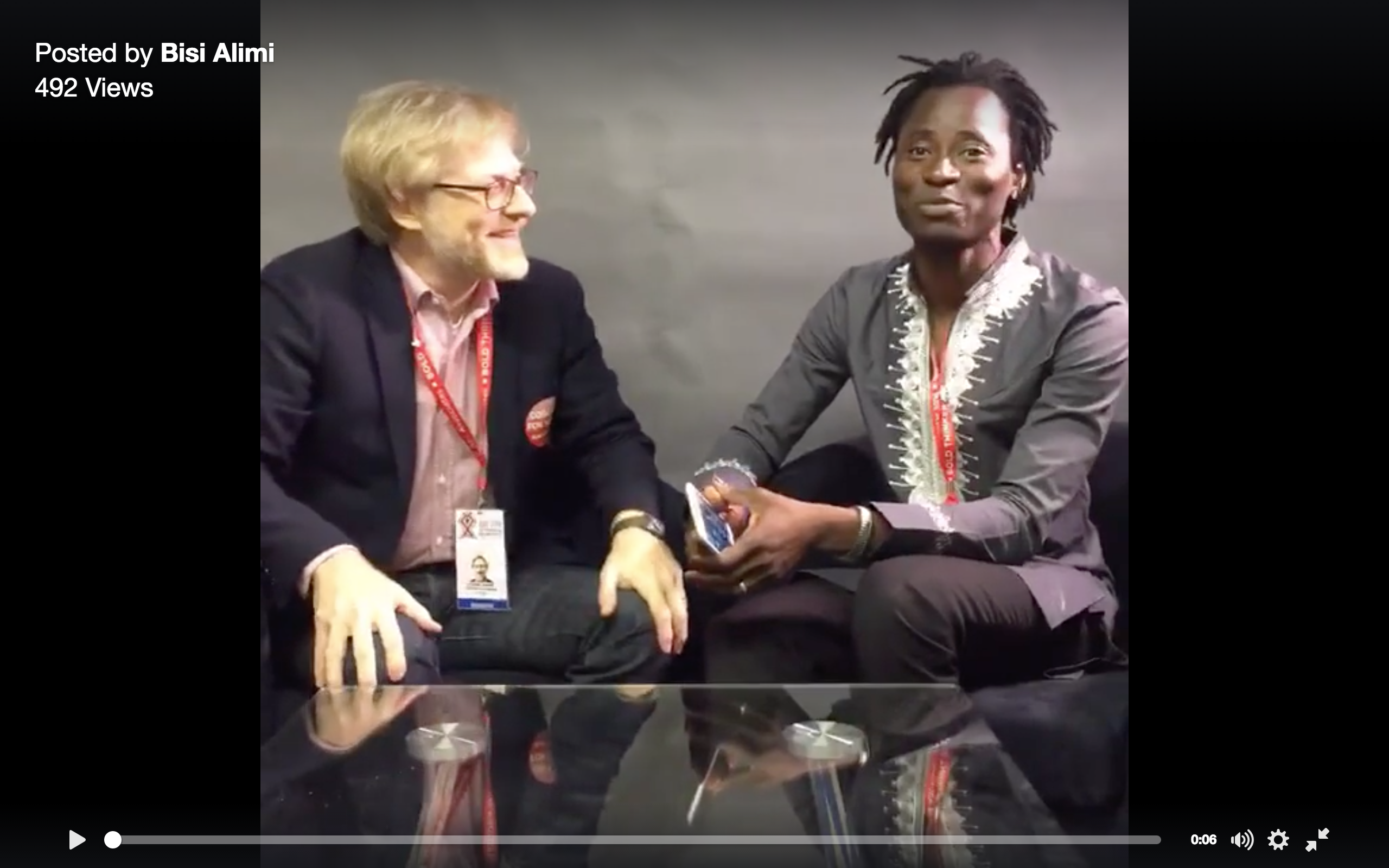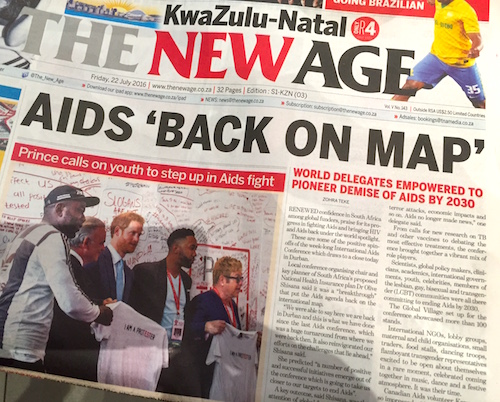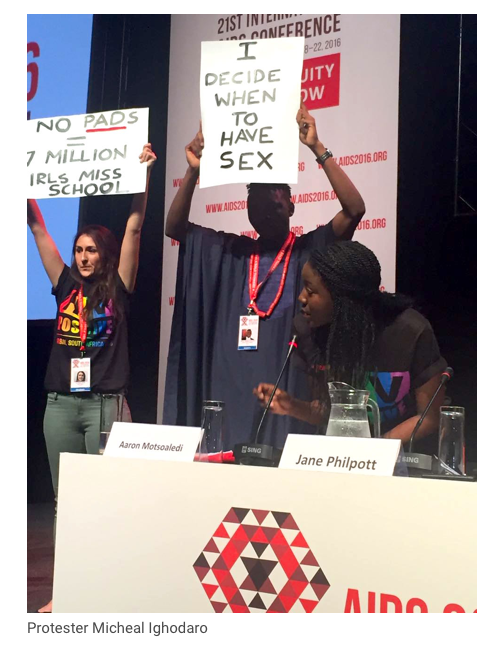We didn’t know how it would go.
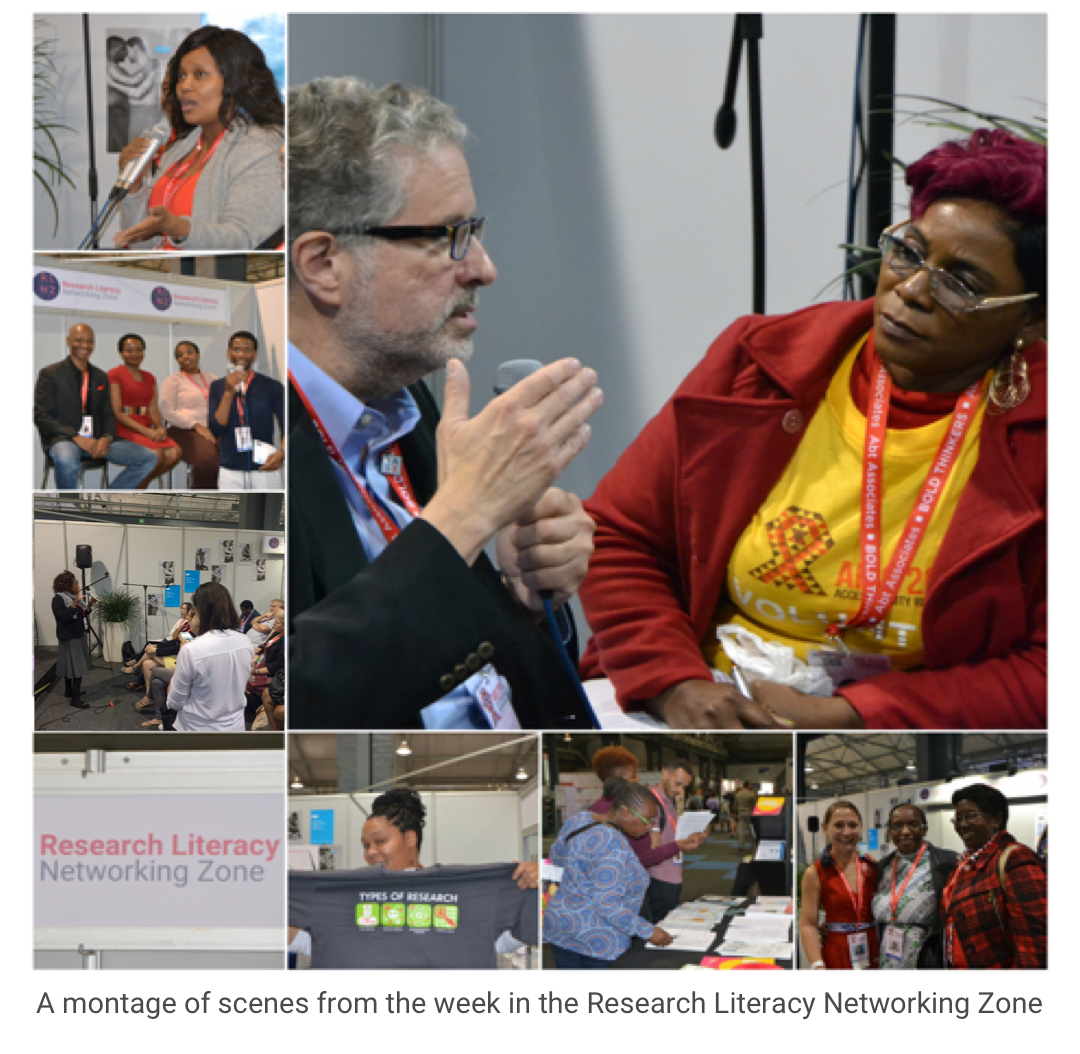
We knew it would take a lot of work—and even more frustration. We also knew it was an exciting new venture, especially in a time of headlines like, “Biomedical Prevention is Experiencing a New Frontier”. Our goal was for the first ever Research Literacy Networking Zone (RLNZ), set up in the Global Village at the 21st International AIDS Conference in Durban (AIDS 2016), to be place where conference goers and community members could unpack the science and the status of HIV prevention, treatment, and cure research. We hoped people would come, we hoped it would be a valuable service for attendees and mostly we hoped it would broaden awareness and support around these fields.
We never anticipated that our hopes would be exceeded—through five days of constant action in the Global Village, the buzz at the RLNZ was nearly relentless.
AVAC and partners IRMA, NHVMAS, TAG, WACI Health, and WRHI worked together to make the Zone come to life. We spent five days on our feet distributing materials, playing educational games, running sessions, and mostly, talking to people. We saw formal sessions with dedicated speakers draw participants who filled the space and spilled into the aisle-way around the Zone. We saw the impact of having a researcher sit in a circle, rather than stand at a podium, to speak with community members. We saw the power of working one-on-one to make sense of data from an infographic about the effectiveness of PrEP for women. We saw what can happen when someone from Philadelphia sits on a couch with someone from Nairobi and talks about vaccine research in their respective countries. It’s hard to capture in words the richness we experienced, but here are some highlights of what we saw, heard, and felt in the Zone.
Monday: Today’s highlight came when Nobel Laureate Françoise Barre-Sinoussi made a surprise appearance at the session Understanding HIV Cure Research. She took the microphone, ignored the podium and warmly addressed the large group attending the session. She urged them to find meaningful ways to explain “cure” to their communities. Much of the session’s discussion focused on the meaning of “functional cure”, “remission” and “sterilizing cure”, highlighting the importance of being able to explain these terms in lay language. Many walked away with a new appreciation for the challenges of cure research and the many steps along this path.
Tuesday: Another leader in the AIDS world visited the Zone today—Emilio Emini, the Director of HIV at the Bill & Melinda Gates Foundation. Dr. Emini has a long and distinguished career in HIV research and may have been the perfect person to sit with community members and discuss research issues across the board. Dr. Emini caught our attention at this session when he said the research field will be taking a page from colleagues working on the contraceptives pipeline. Like them, he wants to roll out what we have, as imperfect as it is, while we urgently seek new options that address the needs of end-users. As various HIV prevention research fields move into later phase trials and potential rollout, this is a space to watch!
Wednesday: One of our highlights today was a packed session about advancing PrEP advocacy. We heard loud and clear in this session, and all week, that people know PrEP. This is a marked difference from even two years ago at the International AIDS Conference in Melbourne, highlighting the rapid expansion and success of PrEP advocacy at community, policy, healthcare and funding levels across the globe.
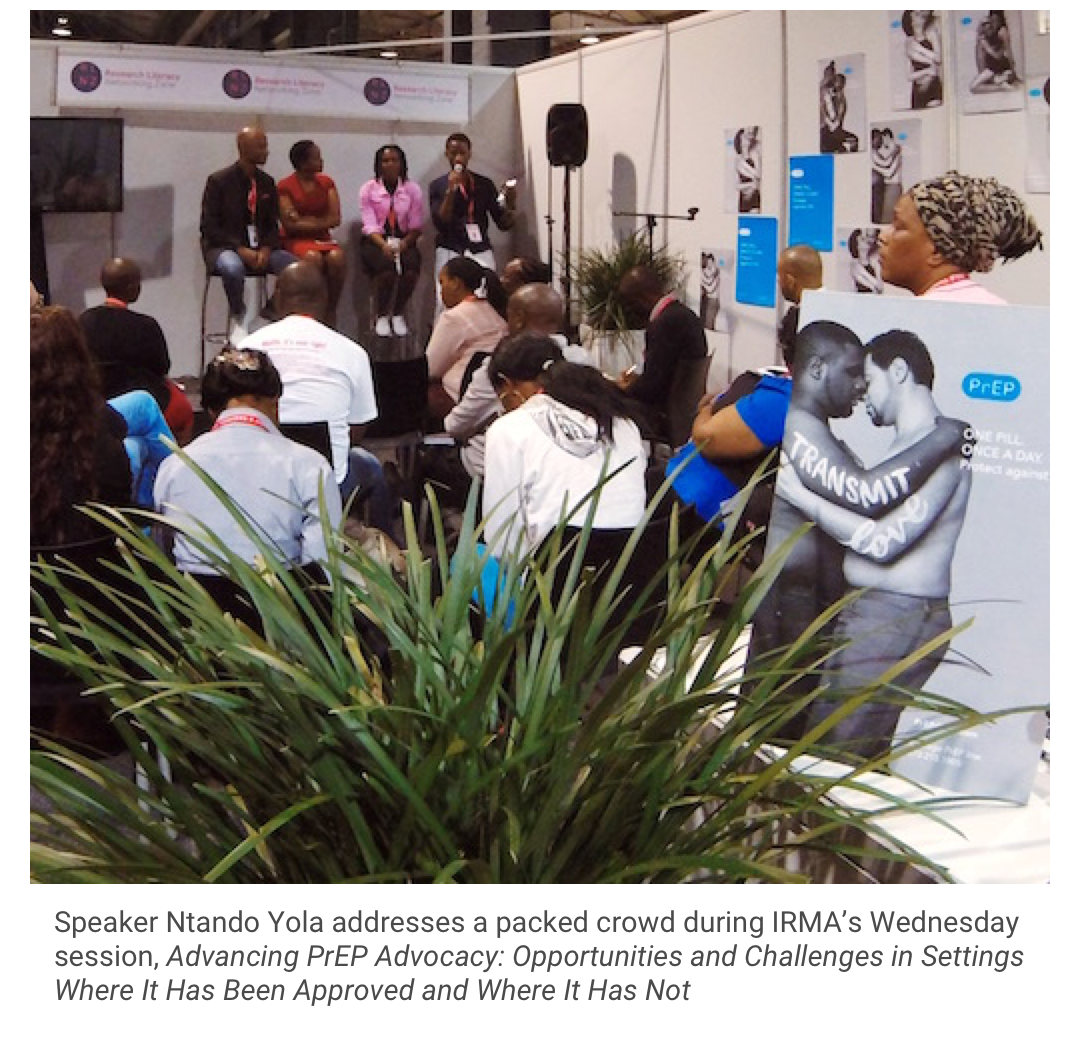
Thursday: Preventive vaccines were on the table at the Ask the Researchers session. Community members heard in lay language about this exciting time for multiple vaccine concepts and movement into efficacy trials. But one highlight came outside the day’s formal sessions. Foot traffic had died down a bit as Thursday was the last full day of the Global Village. During a quieter moment, three women arrived at the Zone wanting to play our “Test Your Research Literacy” game. They may have been mostly motivated to win a T-shirt for answering one of the questions from the hard column, but when they didn’t quite have the answers, they combed through the fact sheets and other tools available in the Zone until they found the info they needed. Prizes well-deserved!
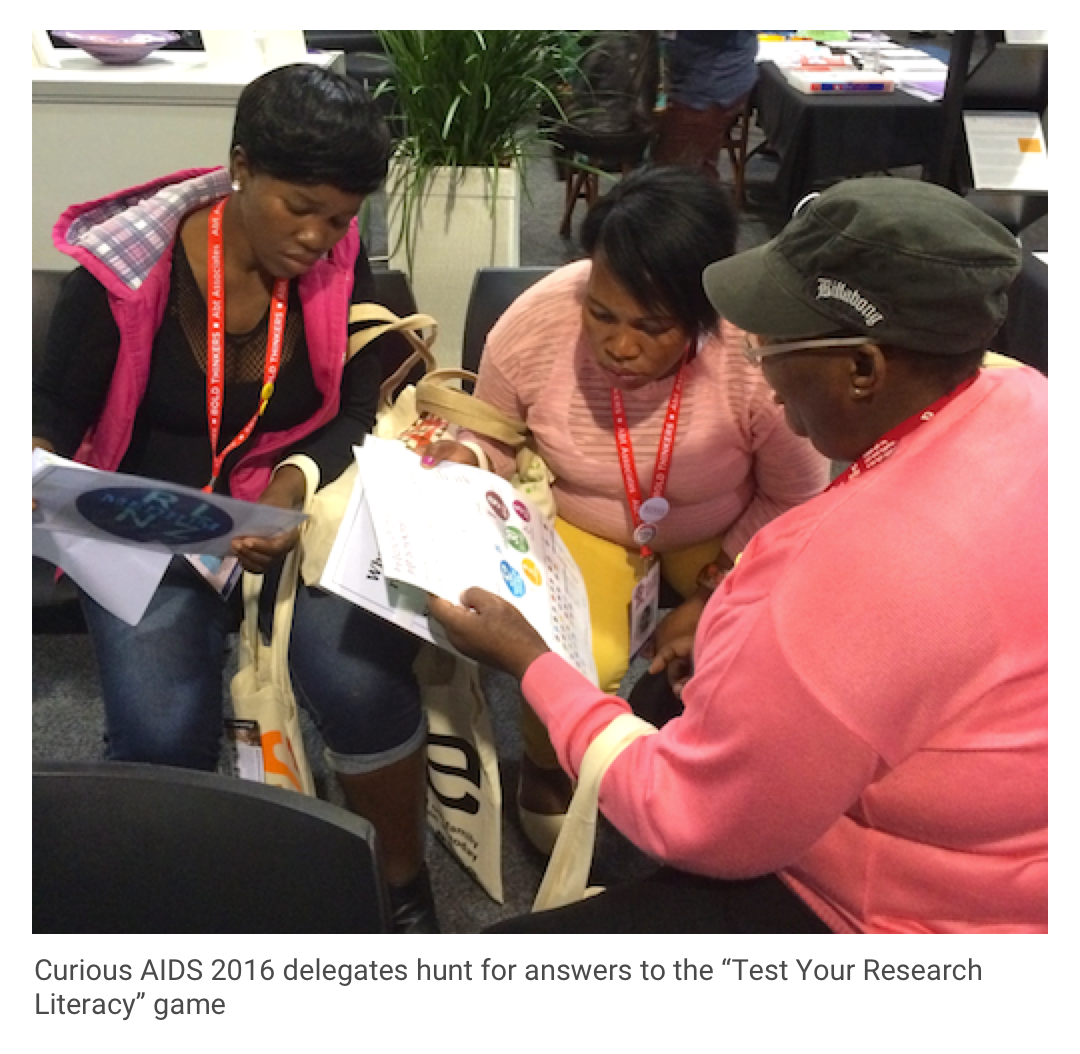
Friday: Exhausted but inspired, we broke down the Zone. Looking around, we reflected on this packed week, which our co-organizers, advocacy partners, visitors, and research representatives across the board agreed in force was a massive success. Maybe it was the plants and their welcoming green, I thought, that invited so many people in and made the Zone a comfortable space. Maybe it was the striking posters from Chicago’s PrEP 4 Love campaign. The moment these posters went up in the Zone, people stopped, stared, said things like “Those are beautiful,” and “Thank you for including people with real bodies,” and then asked, “What is the Research Literacy Zone all about?”
I wasn’t sure, but something worked.
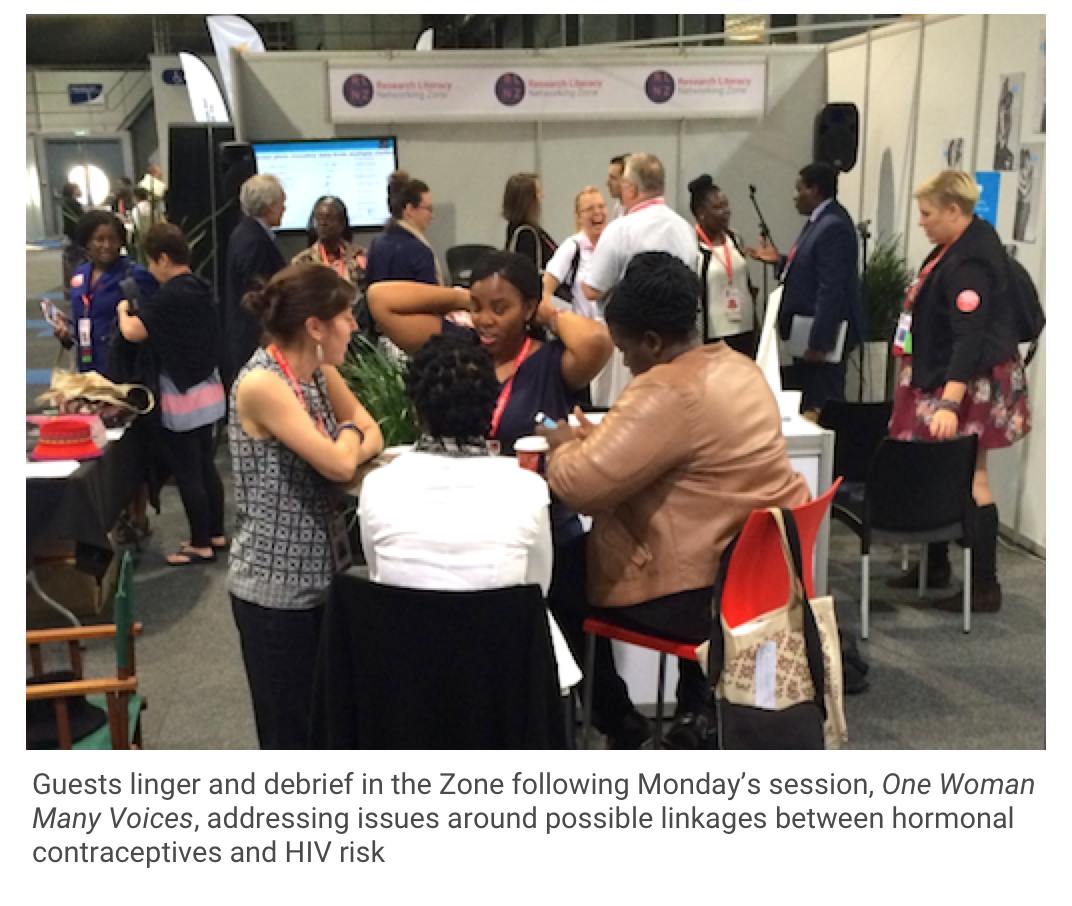
A group of advocates lingered on the couches as we packed up. I stopped and nodded to one, a 2016 AVAC Advocacy Fellow, who was taking his final opportunity to charge his phone at our charging station. I said, “You are going to miss this place.” He responded, “This is our home.” I realized then that the most important ingredient in all of this was the people. The people with their questions, their hunger to learn, their desire to debate, and their ability—in this space—to interact and engage in research. Just as in research, it was the people themselves that were the most important metric of success of the Research Literacy Networking Zone.
This was a first for an AIDS conference—but it surely can’t be the last.

See you at the next Zone!
